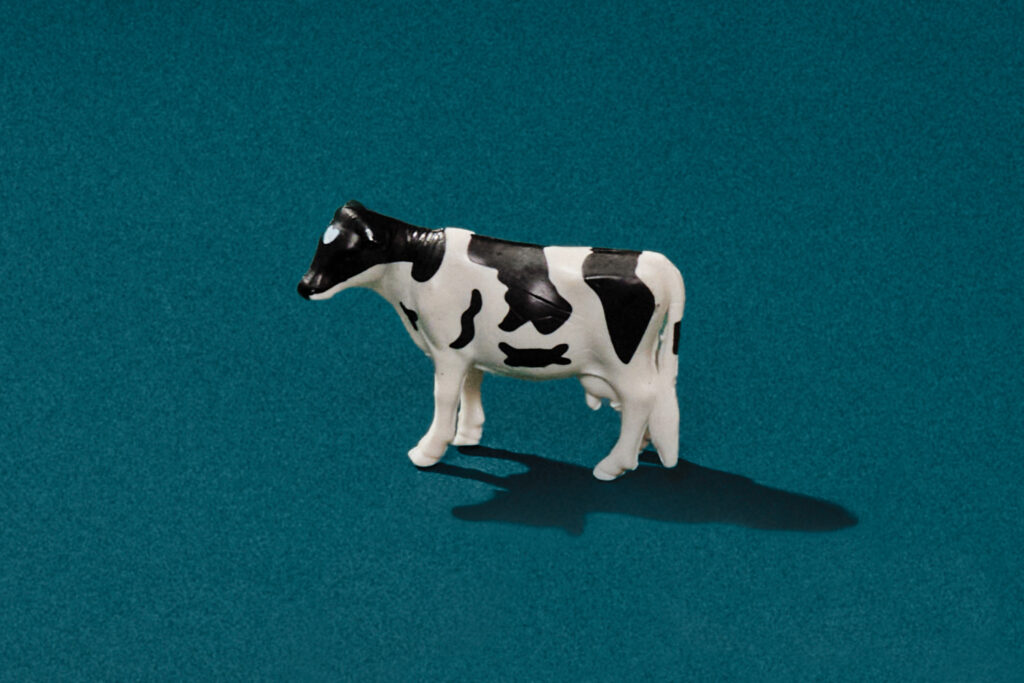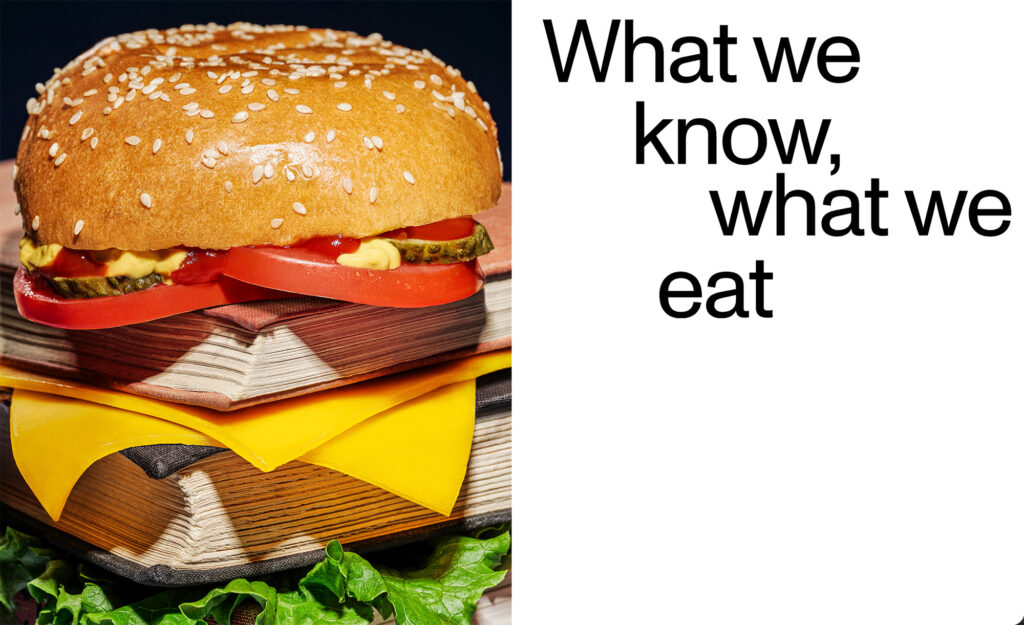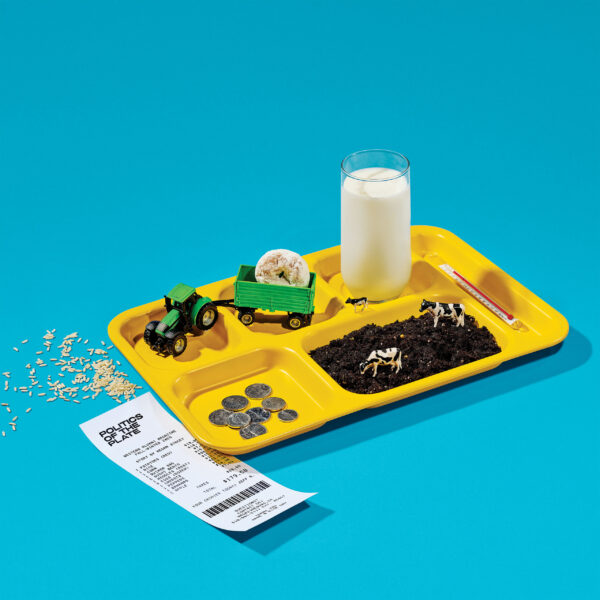How climate, capitalism and inequality are reshaping agriculture and why local, inclusive approaches may be key to food security.
It was hailed as the “miracle crop” of the Andes, a nutrient-packed plant that’s naturally gluten-free and can grow amid frost and drought.
But when quinoa rocketed to popularity, adorning salads and grain bowls all over the world, its cost followed suit. Surging prices brought prosperity for some farmers who’d been growing it for centuries, but also introduced brokers and larger growers who dominated production, sometimes degrading soil and straining already scarce water supplies.
The powerhouse product once championed by the United Nations during the “International Year of Quinoa” in 2013 became both a success story and cautionary tale.
It’s a lesson in the power of food—and the risks inherent in our agricultural systems. As weather fluctuates and climate change intensifies, those consequences become more dire. “Food is one of the most fundamental starting points for thinking about many of the biggest challenges we face in the modern world,” says geography professor Tony Weis, an expert in global food systems and industrialized agriculture.
From climate change and corporate monopolies to discrimination and disease, food is entangled with the trickiest problems. “It’s a potentially powerful window into the problems as they exist now, but also the possibilities for change,” Weis says.
There is no miracle crop that can ensure every farmer is paid fairly or equalize access to healthy food. It’s about local realities, and solutions that work for the people eating and growing there. No one-size-fits-all solution will answer for the problems—and possibilities—seizing our food systems.
“We can’t go about building our economy while destroying the environment. We also can’t have a world that is grossly unequal. I want to live in a world with economic security for everyone,” says Bipasha Baruah, a Western Research Chair and professor of gender, sexuality and women’s studies. “So, how do we balance it all?”
The time for perfect or “morally pure” options is long gone, says Baruah, who specializes in interdisciplinary research at the intersections of environment, economy and equity. She wants to see creative ideas eagerly accepted and tested. “It could be a crop introduced in a different way. It could be a social form of innovation. We need to understand how an idea interacts with the local system. That’s why we need out-of-the-box thinking.”
Crops like corn, rice and wheat dominate much of the world’s food supply, but others are hardier and more climate resilient.
“It’s disturbing how narrow our food choices and availability are on the global scale,” Baruah says.
She works in Rajasthan, India, a desert state that’s become even drier due to infrequent rain. Decades ago, government incentives spurred farmers in the region to grow rice and wheat. This change curbed the use of traditional crops like barley and millet, though these higher-protein plants were better suited to the local vegetarian diet.
Food security improved as local producers began to use high levels of irrigation, pesticides and fertilizers. The government bought rice directly from farmers at a good price, converting the remaining barley farmers.
“Over time, barley almost died as a crop. Now, more recently, they’re discovering it can actually grow in drier soils and produces a better yield. So now we need to change other infrastructure—governments need to start developing models where they acquire barley,” she says. “People tend to think of food crops versus cash crops: rice versus rubber, lentils versus coffee. But you can have food and cash crop in one, like barley.”
Its growth in Rajasthan even allowed beer companies in India to use local products, rather than importing barley. Why bring in what can be grown locally? “Here is a crop that you can eat and sell. You can even feed the residue of the plant to cows and goats, which produce milk. It’s a little ecosystem,” Baruah says.
Those crop swaps and projects that challenge the status quo are urgent, Weis says. “Agriculture and food systems need to dramatically change to mitigate or reduce the extent of climate change in the coming years and decades,” he says.
“One of the core problems is the massive land use required to grow and raise the food we eat, particularly livestock,” Weis adds. “If we were to meet our nutritional needs more efficiently, we could conceivably return huge amounts of land to natural habitats, which would simultaneously enhance the conservation of biodiversity and the sequestration of carbon.”
Farmed animals control more than 75 per cent of all land devoted to producing food, between grazing and feed crops (led by corn and soybeans), but provide under 20 per cent of the world’s calories.
Many consumers have little sense of how their beef and bananas are produced or where they come from. That contributes to the problem, says Weis. “A lot of people don’t appreciate the extent to which agriculture bears on climate and other environmental challenges. They go into supermarkets and see an extraordinary bounty and don’t think about where that food has come from or the conditions under which it was produced.”
And those overflowing supermarkets belie the reality that interactions between climate change and agricultural systems are making life—and growing—much harder.
“Changes in climate patterns around the world have had such devastating consequences on food security in some countries,” Baruah says. She’s seeing countries with two growing seasons restricted to one and lack of rainfall in other areas reducing yields by one-third. The implications are enormous.
“The places poised to be hit worse and first by climate change—and those already being hit most adversely—are many of the world’s poorest regions, which have had the least to do with causing it,” Weis adds.
The ripples of the climate crisis affect more than just the food on your plate or the balance in your bank account. Health, behaviour and performance are also impacted.
“Food relates to so much that determines our quality of life. Half of the leading causes of death are food-related,” says Jason Gilliland, a professor of geography who’s cross-appointed to Western’s School of Health Studies and Schulich School of Medicine & Dentistry. He leads Western’s Human Environments Analysis Laboratory, focused on research that helps build healthy, thriving communities. “If you go to school hungry as I did when I was a child, you don’t have the energy to learn and play as you would have otherwise. Good food is essential for optimal growth and development, and that means your brain, too.”
He points to the need for universal school nutrition programs to fuel and educate kids and teens, so they learn to purchase and prepare foods effectively—ultimately taking a bite out of food insecurity and consequences of ultra-processed diets.
“It all takes knowledge and literacy and skills,” Gilliland says. The system isn’t built to provide it. Not in schools, and certainly not in the retail landscape, where a handful of large-format grocers have a monopoly.
Half of the leading causes of death are food-related.
The same issue applies to the massive industrial operations that grow most of our food. Even in southwestern Ontario, with its fertile farmland, the majority of agricultural space is devoted to just a handful of crops and livestock species. “Industrial monocultures and livestock operations are extraordinarily resource-intensive,” Weis says.
From manufacturing to trucking in seeds, animals, pesticides and fertilizers over long distances, the focus is on producing extremely high yields and using as little labour as possible, Weis says. This approach is environmentally costly, giving big players an advantage and leaving smaller farmers struggling.
“There is a very small group of entities that control a great deal of the power and value in agriculture. Still, we see pockets of smaller-scale farmers trying to do things in radically different ways,” Weis says. “Biodiverse farming takes more labour and knowledge, which makes it hard to compete with high-yielding industrial methods.”
Though consumers can’t change entire systems, there is still value in supporting those ‘radically different’ farmers through options like community supported agriculture (CSA) boxes, farm-gate sales and advocacy, Weis says. Shopping local whenever possible, ponying up for fair trade products when it’s not and eating less meat are actionable steps for people looking to put a more sustainable dinner on the table.
Weis sees some hope.
“There’s lots of evidence that small, more biodiverse farms around the world that use vastly fewer inputs can still generate far more total net nutrition per land area than resource and pollution-intensive monocultures.”
Even when people have the desire, having the access or ability to support new farming approaches isn’t simple. In many suburbs, a trip to the grocery store can mean driving or taking the bus for kilometres.
“In some areas in London, Ont., public transit takes an hour to get anywhere. People can’t shop for groceries that way,” Gilliland says, stressing that city design matters. He advocates for a European approach, with small shops selling meat, dairy and fresh produce and walkable markets everyone can access easily and frequently.
Community gardens, shared food knowledge and growing on underutilized city land are other possible solutions to move the needle, Gilliland says. City planning plays a role, too. New neighbourhoods and high-development areas need to be scouted and planned for food—corner markets, retail stores and community gardens. “We need local cooperation and collaboration.”
Experts agree there’s also a role for governments and other global organizations to play in the future of food.
Subsidies are one tool, incentivizing farming approaches that aren’t as environmentally damaging and encouraging producers to grow more sustainable crops. Governments can also buy food directly to support certain practices. But long-standing patterns of agricultural subsidies tend to favour the largest producers, Weis says.
When it’s more profitable to grow another product that’s shipped across the world, governments can help ensure growers also produce the fruits and vegetables needed for a healthy population, Gilliland adds.
Advocacy organizations fighting for less monopolization and more equitable agri-food systems are pushing for improvements via public policy, another avenue where passionate consumers can lend their voices.
The research and expertise of non-profits, intergovernmental organizations and even the private sector—as is the case with the beer industry in India—can also play a vital role. Their experimentation and guidance can help states determine which successful projects from other regions could work in their own countries, Baruah says.

Take the Food and Agricultural Organization (FAO)’s “forgotten foods” guide, detailing 100 promising crops traditionally cultivated in Africa but now neglected or underutilized. Looking back can give good clues to the future. Whether it’s barley in Rajasthan or the African black plum in Nigeria, favouring local and traditional foods can offer better nutrition and more resilient crops.
Food sovereignty—the right to define agricultural systems and have access to healthy, culturally appropriate food—has become increasingly important in the age of geopolitical strife.
Canadians eagerly embraced the ‘Elbows Up’ mantra and sought to buy fewer American goods after President Donald Trump’s repeated tariff threats. Though the context is unfortunate, Western experts agree it’s a signal that consumers do care about where their food comes from. “Many of us are now paying attention and making that decision to buy the Canadian product over the Californian one,” Gilliland says.
It’s especially important among Indigenous communities, where food knowledge is aligned with health, medicine, sustainable environmental practices and connection to the land. Building on this understanding, Western researchers are leading a multi-million dollar project to improve Indigenous food sovereignty for urban residents.
Led by Chantelle Richmond, Canada Research Chair in Indigenous Health and the Environment, alongside Indigenous knowledge keepers, the program is nourishing minds, spirits and reconnecting people with ancestral practices.
“There has been an important shift into research on Indigenous food security and food environments, but a lot of that work remains focused in northern communities or with populations living on reserve and rurally—leaving out Indigenous Peoples who live in urban centres,” says Richmond, a geography and Indigenous studies professor. Nationally, more than half of the Indigenous population live in cities. In Ontario, it’s about 75 per cent.
In London, Ont., Indigenous residents are 10 times more likely to suffer food insecurity. Traditional foods—and the resources, knowledges and practices so desperately needed to grow, cook or store them—require relationships and belonging, Richmond says. Too often, those connections must be built or rebuilt in urban centres. “This mismatch between need and resources—and the fact that this knowledge is so precious—is what drives our focus on Indigenous food sovereignty in London,” she says.
Richmond and her collaborators—her team has partnered with the Southwest Ontario Aboriginal Health Access Centre—are working not just to keep people fed and full, but to reconnect them with culturally relevant practices, such as hunting and gathering in line with the natural cycles of the land.
“Our partnership is critical—as it is the community members themselves who best know what their challenges are, and how researchers like us can support them,” Richmond says.
Despite the creative solutions brewing, the path forward remains murky.
The places poised to be hit worse and first by climate change are many of the world’s poorest regions, which have had the least to do with causing it.
“Farming has become an occupation of last resort for people. It’s so precarious, and it’s become even more so because of climate change,” Baruah says. Weis and Baruah agree producers aren’t seeing a fair cut of the money made from the foods they grew. Many are now dependent on off-farm jobs. In Canada, less than one per cent of the population now works in agriculture. Yet on a global scale, farming still remains by far the single largest livelihood.
It’s especially fraught for women, who make up half of the world’s small-scale farmers and an even greater proportion of the agricultural workforce in developing countries. “Women are basically feeding the world,” Baruah says.
Yet, they often lack land rights. The inequity can prevent female growers from pursuing the innovative solutions so desperately needed to create fairer, more resilient food systems. The need for visibility and appreciation of all agricultural workers is a broader issue.
“We literally can’t live without food. We don’t respect farming; we’ve stopped valuing agriculture. Interest has declined among young people around the world,” Baruah argues. Her message is like an echo of the “Farmers Feed Cities” bumper stickers. “We need to recognize and reward farmers,” she says. “This is not an industry we should shortchange.”
Continue reading:
● Farming the future →
● Politics of the plate →
● What we know, what we eat →
● Scraps and solutions →
Next:

